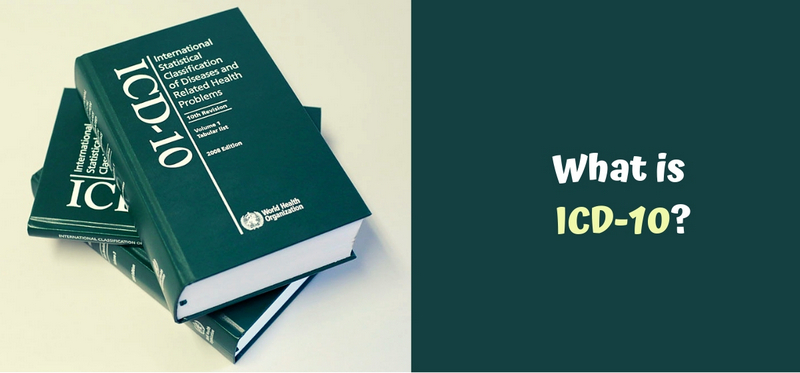What is ICD-10?

ICD-10 is an international classification of diseases of the Tenth revision. It is a regulatory document with the generally accepted statistical classification of medical diagnoses, which is used in health care to unify methodological approaches and international comparability of materials. ICD-10 was developed by the World Health Organization (WHO). The words “Tenth Revision” means the 10th version (10th edition) of the document since its creation (1893). The 10th revision of ICD is currently in force, it was adopted in 1990 by the World Health Assembly in Geneva, translated into 43 languages and is currently used in 117 countries.
Goals and objectives of ICD
The purpose of the International Classification of Diseases is to provide opportunities for the systematization of knowledge and data on mortality and morbidity in different countries at different times. The ICD makes it possible to reduce the verbal formulations of diagnoses of diseases and health-related problems to codes, which unifies the process of accumulation, storage, analysis, interpretation and comparison of data.
The international classification of diseases solves the problem of generalization and classification of diseases at the international level. ICD is an international standard diagnostic classification that is used in compiling mortality and morbidity statistics in countries that have adopted ICD. ICD is used for medical and epidemiological purposes, to ensure the quality of medical services.
Modern medical information systems, medical data collection and transmission systems use ICD codes to increase reliability, provide convenience and manage health care.
ICD-10 is used in the work of medical institutions all over the globe.
ICD-10 classification
The structure of the ICD-10 is developed on the basis of the classification proposed by William Farr. All practical and epidemiological purposes, the statistics on diseases should be grouped as follows:
- epidemic diseases;
- constitutional or common diseases;
- local diseases grouped by anatomical location;
- developmental diseases;
- injuries.
Volumes
ICD-10 consists of three volumes:
- Volume 1 contains the main classification;
- Volume 2 contains application guidelines for ICD users;
- Volume 3 is an alphabetical index to the classification.
Volume 1 also contains the section “Neoplasm morphology”, special lists for summary statistical developments, definitions, and nomenclature rules.
Chapters
The classification is divided into 21 chapters. The first code mark in the ICD is the letter, and each letter corresponds to a particular class, with the exception of the letter D, which is used in class II “Neoplasms” and in class III “Diseases of the blood and blood-forming organs and certain disorders involving the immune mechanism”, and the letter H, which used in class VII “Diseases of the eye and adnexa” and in class VIII “Diseases of the ear and mastoid process”.
Four classes (I, II, XIX and XX) use more than one letter in the first character of their codes.
Classes I-XVII relate to diseases and other pathological conditions, class XIX – to injuries, poisoning and some other consequences of exposure to external factors. The remaining classes cover a number of modern concepts relating to diagnostic data.
Blocks
Classes are divided into homogeneous “blocks” of three-digit headings. For example, in class I, block names reflect two axes of classification — a method of transmission of infection and a wide group of pathogenic microorganisms.
In Class II, the first axis is the nature of neoplasms by localization, although several three-digit rubrics are intended for important morphological types of neoplasms (for example, leukemia, lymphoma, melanoma, mesothelioma, Kaposi’s sarcoma). The range of rubrics is given in brackets after each block name.
Three-digit codes
Within each block, some of the three-digit headings are intended only for one disease, selected because of its frequency, severity, susceptibility to the actions of health services, while other three-digit headings are intended for groups of diseases with some common characteristics. The block usually contains rubrics for “other” states, giving the opportunity to classify a large number of different but rarely encountered states, as well as “unspecified” states.
Four-digit codes
Most of the three-digit headings are subdivided by the fourth digit after the decimal point. If the three-digit heading is unseparated, it is recommended to use the letter “X” to fill the space of the fourth character so that the codes are the standard size for statistical data processing.
Four-digit sub-headings are used in any suitable way, defining, for example, different localization or variations of one disease.
The fourth character .8 is usually used to denote “other” states belonging to this three-digit heading, and the sign .9 is most often used to express the same concept as the name of the three-digit heading without adding any additional information.
Unused codes “U”
Codes U00 – U49 should be used to temporarily designate new diseases of unknown etiology. Codes U50 — U99 may be used for research purposes, for example, for testing an alternative sub-classification in a special project.